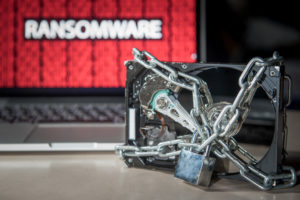Have You Considered Moving to Remote Desktop Services (RDS)?
These days, many organizations are looking for ways to help their remote workers and road warriors stay connected. One solution that works for many is implementing RDS, or a Remote Desktop Services server, which enables workers to access the network anywhere from any device that is VPN compatible as if they were sitting in the office.
What are the benefits?
- Implementation process and cost savings. Once the initial cost and time of setting up the server is made, it becomes cost effective to move to an RDS environment. “The enormous cost savings that is gained from a Remote Desktop Services server implementation is in the reduced time it takes to do the implementation and even more so in the time saved with ongoing maintenance and management of your company’s end-user desktop infrastructure.”1 Unlike a traditional environment, once the devices are configured on the server level once, individuals can easily add another user with the same configuration. This allows the initial setup cost to be divided amongst the number of users, opposite of a PC-based environment, where setting up a machine must be done separately.
- Software Updates/Management. Since all users are connected to the same server, updates only need to be performed once to ensure that everyone has access to the latest versions. This drastically reduces costs, time, and potential for mistakes or inconsistency.
- Scalable. Once the server is setup, it is simple to add a new user.
- Enhanced Security. With an RDS, no data is stored at the local level of the machine. RDS prevents users from installing unauthorized software, further protecting the data. With this enhanced security, organizations are able to save on purchasing expensive laptops with encryption and can purchase significantly cheaper laptops or “dummy” computers as all the processing is done through the server.
- Increased Mobility. Unlike with a standard VPN, users on an RDS are able to end a session on one device and pick it up at the same point on another. For example, if you are holding a meeting in a conference room, you can log into RDS and take notes. Upon completion of the meeting, you can close out of the session and pick it back up at the same point on your laptop or other device.
- Disaster Recovery. In the event of the office burning down or inaccessibility, as long as employees have a compatible VPN device, they can work like nothing happened if the RDS server is being hosted at another location.
Before you commit to what to think about when considering moving to RDS? Is this solution right for your business?
- What programs do you regularly use? If you use programs that use a large amount of memory, RDS may not work for you – speed will become an issue. Some programs that are not compatible with RDS are: CAD programs, Graphics Rendering programs, and any program that requires bolstered hardware.
- What is the size of your largest files? If you are not at the physical site that hosts the RDS server, it will take a significant amount of time to upload a movie file for example.
- How many users will be on the network? This ensures you can allocate the necessary resources to each user so they will not see a reduction in speed.
- Will there be any printers added to the server? It is helpful to know which printers end users will be printing to from the RDS server if it is hosted in the cloud. If it is a large-scale printer (such as a large-format plotter printer) cloud based RDS may not be the best option.
Be sure to have a full list of programs that your organization uses to ensure they will work in an RDS environment. A Hybrid solution may be a good option for these organizations.
Working with a Managed IT service provider can assist you in seeing if an RDS environment is right for your organization. You are not alone in this process, Bryley can help. Contact us at 844.449.8770 or by email at ITExperts@Bryley.com to learn more. We’re here for you.
1 http://blog.hcd.net/terminal-services-remote-desktop-services-the-many-benefits/

 Ransomware and other cyberattacks seem to be more prevalent than in previous years. While the news has mostly focused on the large attacks (WannaCry, Petya, Netflix hack, etc), small businesses are not immune to these dangers. In fact, in a recent study performed by Symantec, it was discovered that phishing campaigns targeted small businesses 43% of the time, up 9% over 2014 and a dramatic increase from the 18% of attacks in 2011.1 While larger organizations are able to rebound, roughly 60% of small businesses that experience a cyberattack are closed within six months.2
Ransomware and other cyberattacks seem to be more prevalent than in previous years. While the news has mostly focused on the large attacks (WannaCry, Petya, Netflix hack, etc), small businesses are not immune to these dangers. In fact, in a recent study performed by Symantec, it was discovered that phishing campaigns targeted small businesses 43% of the time, up 9% over 2014 and a dramatic increase from the 18% of attacks in 2011.1 While larger organizations are able to rebound, roughly 60% of small businesses that experience a cyberattack are closed within six months.2 The benefit of
The benefit of 